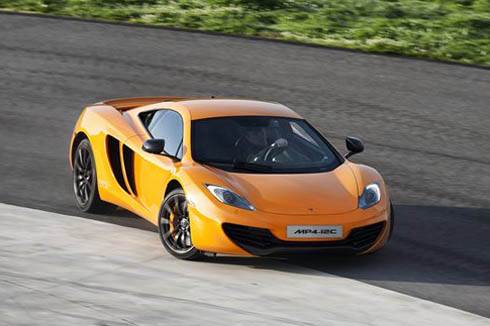The MP4-12C is McLaren Automotive’s answer to the Ferrari 458 Italia, and quite some car it is too.
Priced to rival the 458 head on yet toting more power, more performance and even greater technical sophistication than its nemesis from Maranello, the 12C is without question one of the world’s most exciting new supercars.
It’s also one of the fastest cars ever to be offered for use on the public road, with a claimed 0-100kph time of 3.1sec, and a top speed of 330 kph.
At the centre of the 12C sits a full carbonfibre tub, and that alone makes it different from, and theoretically superior to, any other rival at similar money. But it’s the car’s suspension that’s perhaps the most ground breaking. It features double wishbones and coil springs but no traditional anti-roll bars as such, and instead uses hydraulics and active dampers to provide its control. This system, claims McLaren, provides the 12C with as much as 25 per cent more grip than conventionally suspended rivals.
The 12C’s 3.8-litre twin turbo V8 engine was developed jointly by McLaren and Worthing-based Riccardo Engineering, and it develops a thumping 592bhp at 7000rpm and an arguably even more impressive 45 Kgm right from 3000-7000rpm. To this is mated a seven-speed dual-clutch gearbox (made by Graziano), which features a 'Pre-Cog' selection mechanism that shifts gear faster and more smoothly than in rival systems.
All up the 12C weighs just 1301kg when dry and when specified with the lighter of the two alloy wheel designs. That gives it a kerb weight which is in reality it’s nearer 100kg lighter than the 458, if you specify the two cars like for like. Braking is provided by huge steel ventilated discs front and rear, and also by an Air Brake system that deploys only when the car’s sensors detect that a really big stop is required. Carbon ceramic discs can be specified as an option.
What’s it like to drive? In a word, incredible. And very, very fast indeed. The first time I put my foot down and held it there properly, the level of thrust that was unleashed through the rear tyres came genuinely and sincerely as a shock. It starts from the moment you nail the throttle at anything beyond 1500rpm, even in fourth gear, and by 3000rpm you can already feel your organs being squeezed hard into the seat. From there until the cut out at 8500rpm there is then just a vast, constant wave of energy that catapults the 12C forwards – with more conviction than any road car you can ever remember this side of a Bugatti Veyron.
And then there’s the noise it makes, which, at a steady 3000rpm/seventh gear cruise is virtually non-existent, but which at 8000rpm in third gear is brain-bendingly loud. Not quite in 458 Italia territory for sheer volume or quality of sound, perhaps, but not far off.
And that’s before you so much as mention the 12C’s handling, ride, steering and braking capabilities, all of which are perhaps more extraordinary still than the straight-line speed. There’s so much grip and such a high level of dynamic composure to the car that you really need to drive it on a circuit to get anywhere near its towering limits.
What’s most spooky about the 12C’s chassis is the lack of inertia it suffers from. The nose snaps to attention and glues itself on to the apex of whichever kind of corner you aim it at (and at seemingly any speed). And the rest of the car then just seems to follow.
Yet despite the urgency of its responses there’s nothing remotely neurotic in the way the 12C behaves. There are no spikes in its behaviour, no sharp edges to its handling. And that, apparently, was one of the key remits when designing the car’s whole dynamic personality.
If you’re in the fortunate position of being in the market for this kind of car then the choice has just become a whole lot broader, and the decision process has become harder. McLaren has taken the game so far forwards that you’d be either foolish or very stubborn in your ways not to at least give it a try.



Comments
Member Login
Personal Details
No comments yet. Be the first to comment.